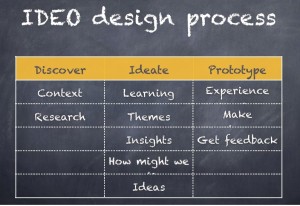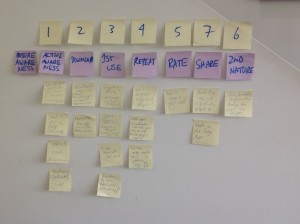This article continues the discussion from Product Anonymous back in June. Full credit goes to the team and the attendees for providing key steps, insight and critical analysis.
In the last set of posts we defined the problem (topic and people), identified some alternatives, and evaluated those alternatives. Step #4 in the process is to decide between those alternatives.
With all the evaluation you did in the last section, it should be pretty clear what the correct decision should be.
Some extra thoughts on the actual decision point.
Sometimes it is hard to make a decision. You will need to balance the upside against the downside. For quantitative information this may be a mathematical decision, but this is unlikely to be the only part. Since there is always a human element there will be additional complications to resolve.
A good decision should not be a surprise to anyone. Certainly the easiest decisions are those that don’t seem like they were required. If anyone is surprised then it is likely you haven’t done your homework in building engagement and consensus. Everyone should understand that they had a part in the decision, that their opinions and ideas were listened to, and they all got the right background. Everyone should see the decision as a natural evolution out of the options and the situation.
Sometimes it is easier if you decide on what you’re not doing. Striking off alternatives that you aren’t going to do, and see what you are left with.
Will the decision stick? The previous sections discussed the RACI analysis – if the decision is not being supported by the right person then it might not stick – and therefore it won’t be the decision that was needed.
Is the water clouded with too many issues? Whenever there is “Fear, Uncertainty and Doubt” (FUD) then it will become hard to make the decision. Clear up any misunderstandings by going back to first principles.
What would it take for me to believe in the decision? Are you personally convinced this is the right way to go? Or are you going by the numbers?
Are you looking for something that is the optimal decision or just good enough? Some people (known as maximizers) will spend a lot of energy optimising a decision, while some people (satisficers) will simply try to get by with a possible solution. Which one are you?
How will you feel about the decision in 10 minutes, 10 months and in 10 years? Using this tool is a good way to separate yourself from the emotional here-and-now of the decision
Is there some form of personal fear in your decision? We all experience fear of failure and fear of getting it wrong. This is normal. But if this is your product, you need to be proud of your decision, regardless of your fear.
Is it fear that this is a one-way decision? Such decisions are rare, and many can be corrected. And if other people are part of the decision process then they will help. Especially if you have called out assumptions, then they can recognise that change will need to be made.
If you can’t decide then maybe it doesn’t matter. Maybe everything has an upside and a downside that can’t be compared – so every option is good and bad. In which case the option chosen doesn’t matter. But still make a decision because you need to set a direction.
If you can’t decide, then try the ‘slightly cranky’ method. This is the time to channel your inner cranky product manager. Pretend you have been at this all night and you have had enough? Now what? Evaluate and check that it makes sense at the end though. You are effectively trusting your gut now, so look inside and work out the things you decided were most important, and use these for your reasons.
Doing the exact opposite might still be valid. Can you flip it on its head? This can be such a big mental shift that you will probably need to explain the reasoning to everyone again.
So we now have some well evaluated alternatives, we have though about the implications and finally it is crunch time.
You have to make a decision.
Do it.
We have a decision, but it is not over yet. You will need to implement it, and then learn from it. Next we’ll look at the implementation.
Have you got any other tools to help you make decisions? Please feel free to comment below to add to the discussion.
Go back to Part 5: Evaluating Alternatives
Steve is a Product Development Manager at Telstra Wholesale. The views expressed in this post are his only and do not necessarily reflect the views of Telstra.
by the Heath brothers.


